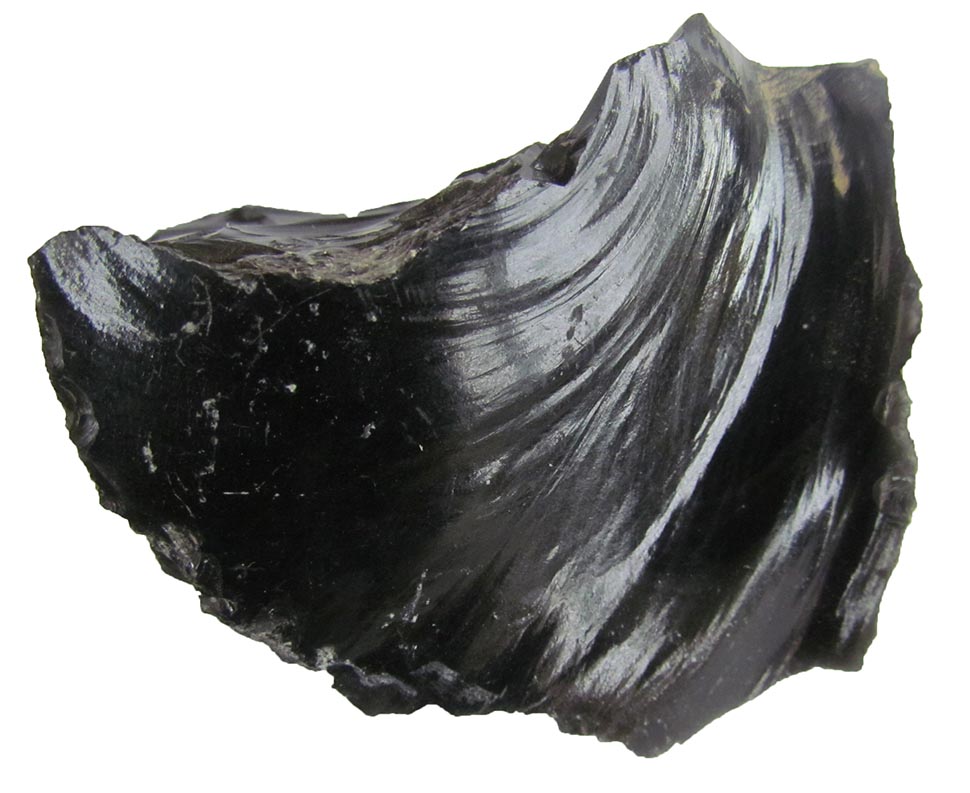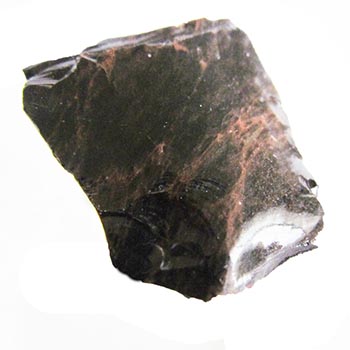Sign up for Lesson Plans, discounts & more!
Obsidian Natural Glass

Obsidian is a glassy igneous rock that usually forms as an extrusive, fast-flowing lava. When the lava cools so rapidly that atoms can't form into a crystalline structure, this glassy rock is the result.

It has a smooth, uniform texture and can come in many different colors. While it is most often black, there are also brown, red, tan, blue, red, orange, and yellow. Sometimes the colors are even swirled together like the Mahogany Obsidian pictured here.
The minerals in obsidian are not in a chemically stable condition. This means that the different mineral atoms begin to react with each other and form crystals. When this happens, white blobs of crystals grow in a radial formation making light spots in the otherwise dark rock.
Another type is called Rainbow Obsidian, contains impure minerals that form an iridescent sheen. It is valued for jewelry and art objects.
Mineral Content of Obsidian
Because obsidian contains minerals similar to those contained in rhyolite and granite, one can find these three igneous rocks in close proximity. All three of them are made up of quartz, mica, amphiboles and orthoclase feldspar and they all have high silica content.
This rock weathers easily under conditions of the natural environment. Heat, wind, and water from different weather formations break obsidian into sediments. As a result, obsidian is always found near recently active, at least in geologic time, volcanoes. It rarely lasts for more than a few million years.
Obsidian In The Stone Age
Because of the glass-like nature of obsidian, it breaks with very sharp edges and an unusual pattern in the glassy surface called a conchoidal fracture. Skilled craftsmen could predict how the rock would break and have been able to work it into into beautiful shapes with extremely sharp edges. The sharp edges make excellent tools and humans have been using obsidian for this purpose for thousands of years. Stone Age people made knives, arrowheads, spear points, scrapers and other tools from obsidian. These tools and blades, and the people who made them, were probably highly-valued in those early human cultures.
Learn More About Igneous Rocks Here

INTERESTED IN MORE? IF SO, YOU MAY WANT TO CHECK OUT OUR OTHER SITES:
fossilicious.com - Our online fossil and mineral rock shop.
fossils-facts-and-finds.com - An educational site about fossils.











